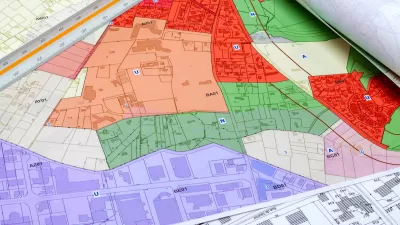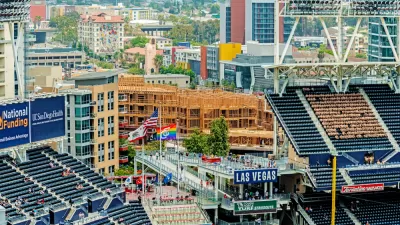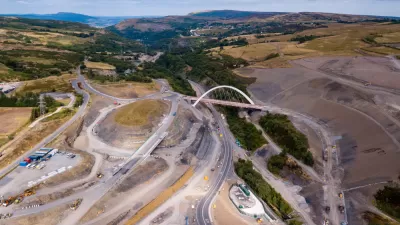The United Nations announces more bad news for the climate and the role of American society and culture in causing the destruction of the planet.

Somini Sengupta reports on the latest United Nations report to sound the alarms about the effect of carbon emissions on the planet's climate: "With world leaders gathering in Madrid next week for their annual bargaining session over how to avert a climate catastrophe, the latest assessment issued by the United Nations said Tuesday that greenhouse gas emissions are still rising dangerously."
The Emissions Gap Report, by the United Nations Environment Program, describes its findings as "bleak."
"Countries have failed to halt the rise of greenhouse gas emissions despite repeated warnings from scientists, with China and the United States, the two biggest polluters, further increasing their emissions last year," explains Sengupta.
For commentary on the report, articles by Aaron Short for Streetsblog USA and Michael Anderson for the Sightline Institute provide plenty of planning related material.
Short notes that one of the key recommendations of the report for quickly and significantly reducing the amount of carbon emissions would be to reduce the size of vehicles. To achieve that goal would require reversing the current trend in automobile preference in the United States, writes Short: "Sales of SUVs and light trucks have risen sharply over the past decade, so now SUVs represent 69 percent of the automobile market share in the U.S., up from 49 percent in 2008."
Anderson focuses on land use, noting the report's recommendation to remove legal barriers to more contact development. In fact, the report suggests a 20 percent reduction to average floor area per person by 2050. The report calls out the United States in particular for making more compact living arrangement illegal in most of the country.
FULL STORY: ‘Bleak’ U.N. Report on a Planet in Peril Looms Over New Climate Talks

Maui's Vacation Rental Debate Turns Ugly
Verbal attacks, misinformation campaigns and fistfights plague a high-stakes debate to convert thousands of vacation rentals into long-term housing.

Planetizen Federal Action Tracker
A weekly monitor of how Trump’s orders and actions are impacting planners and planning in America.

In Urban Planning, AI Prompting Could be the New Design Thinking
Creativity has long been key to great urban design. What if we see AI as our new creative partner?

King County Supportive Housing Program Offers Hope for Unhoused Residents
The county is taking a ‘Housing First’ approach that prioritizes getting people into housing, then offering wraparound supportive services.

Researchers Use AI to Get Clearer Picture of US Housing
Analysts are using artificial intelligence to supercharge their research by allowing them to comb through data faster. Though these AI tools can be error prone, they save time and housing researchers are optimistic about the future.

Making Shared Micromobility More Inclusive
Cities and shared mobility system operators can do more to include people with disabilities in planning and operations, per a new report.
Urban Design for Planners 1: Software Tools
This six-course series explores essential urban design concepts using open source software and equips planners with the tools they need to participate fully in the urban design process.
Planning for Universal Design
Learn the tools for implementing Universal Design in planning regulations.
planning NEXT
Appalachian Highlands Housing Partners
Mpact (founded as Rail~Volution)
City of Camden Redevelopment Agency
City of Astoria
City of Portland
City of Laramie





























